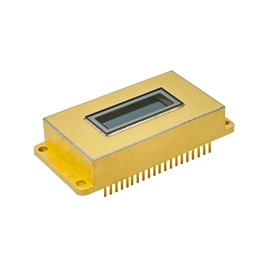The infrared camera lens is the most critical equipment of the video surveillance system. Its quality (indicator) directly affects the overall index of the infrared camera. Therefore, the selection of the infrared camera lens is not only related to the quality of the system, but also related to the project cost. Lenses are an integral part of thermal imaging cameras. Its function is to gather the infrared radiation of the target to the infrared detector, and after photoelectric conversion and image processing, finally form an image with good contrast. The quality of the infrared lens largely determines the performance of the infrared camera. Factors to consider when selecting an infrared lens are as follows.
1. Factors to consider when choosing an infrared lens: band
Infrared lenses should be specially designed according to their operating bands to optimize their performance. The infrared materials used in the infrared lenses of different bands are also different. The SWIR lens, for example, operates within short-wave infrared ranges and uses unique materials and design to facilitate optimal performance.
2. Factors to consider when choosing an infrared lens: vignetting
In general, IR lenses do not allow for vignetting. For the lens used in infrared cooling detectors, if the lens has vignetting, it cannot meet the design principle of 100% cold aperture efficiency, and stray radiation will affect the performance of the infrared camera.
3. Factors to consider when choosing an infrared lens: focal length and field of view
Infrared lenses are usually identified by their focal length. As the focal length increases, the field of view of the lens narrows. Conversely, as the focal length decreases, the field of view widens. Infrared lenses can generally be divided into single-field lenses, multi-field lenses, and continuous zoom lenses. Since the infrared continuous zoom lens can realize target search and continuous tracking of targets at different distances, it has been widely used in many fields.
4. Factors to consider when choosing an infrared lens: F number
The F-number of the infrared lens determines how much of the target's radiant energy enters the thermal imaging camera. The smaller the F number, the larger the size of the infrared lens at the same focal length. This emphasizes the importance of selecting the appropriate F number when designing infrared lenses for thermal imaging cameras. the IR camera manufacturer takes this into account when designing and producing various lenses. By carefully selecting the appropriate F-number, manufacturers can produce high-quality images that are both precise and accurate.
5. Factors to consider when choosing an infrared lens: light transmittance
The refractive index of most infrared materials is very high, and the lens in the infrared lens needs to be coated with a high-efficiency anti-reflection coating to increase the transmittance of the infrared lens. As the number of lenses in the lens increases, the light transmittance of the lens gradually decreases.
6. Factors to consider when choosing an infrared lens: no heating
Since the refractive index of infrared materials changes greatly with temperature, when the ambient temperature changes, the infrared lens will produce corresponding defocus. The infrared lens also adopts two methods of active and passive to achieve athermalization, to ensure the focal position of the lens when the temperature changes don't move.
The lens is equivalent to the lens of the human eye. If there is no lens, the human eye cannot see any objects; if there is no lens, the image output by the infrared camera is a piece of white, without clear image output, which is different from our home infrared cameras and cameras. The principle is the same. When the muscles of the human eye cannot stretch the lens to the normal position, which is often called myopia, the scene in front of the eyes becomes blurred; the cooperation between the infrared camera and the lens also has a similar phenomenon, when the image becomes unclear At this time, the back focus of the camera can be adjusted, and the distance between the chip and the lens reference plane can be changed to make blurred images clear.



